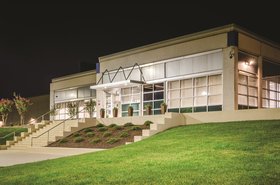Since the web’s creation, it has been almost unparalleled as a force for positive change. Few tools have influenced society in the same way, with the sheer scale and diversity of change.
Two thirds of Britons believe that connecting friends and family across the globe is the most important thing the Internet has made possible, according to recent research from Cisco. In addition, around a third can’t imagine being able to function in their personal lives without the Internet.
While the last thirty years has seen rapid growth in connectivity - with half the world now connected - the pace of change isn’t letting up. By 2022, more traffic will navigate global networks than the entire amount seen in the whole history of the Internet. There are many industries with substantial opportunity for transformation. Whether it’s improvements in surgery and consultations in healthcare or the potential to bring down the barriers to education with new learning formats, styles and content. Capitalizing on all of this potential will require careful management, as connecting the diverse array of people, places, ideas and things is a complex task.
In his own look back on where we’ve come in the last 30 years, the founder of the web Tim Berners-Lee identified the spread of misinformation, along with cybersecurity and privacy, as key areas of focus if the future of the web is to continue in a positive direction. So, what does the web need in place to make the next 30 years of innovation a reality?
A more secure web
The malicious threat from cybercriminals will never go away, but that doesn’t mean businesses and consumers can’t be better equipped. We’re certainly working towards a world where organisations and consumers are better able to minimize the impact criminals can have. It’s important work - 90 percent of all successful cybersecurity breaches are caused by human error. Despite this, Cisco’s 2019 CISO Benchmark Study found that only half (51 percent) of over 3,000 cybersecurity decision makers felt their business was doing an excellent job of managing employee security in their onboarding and security processes.
That said, it’s becoming more positive for businesses. Our own research also reveals that the phenomenon of “cyber fatigue” is on the decline, with fewer decision makers feeling that they have effectively given up trying to prevent cyber-attacks and threats (30 percent in 2019 versus 46 percent last year).
Concepts such as ‘Secure by Design’ also mean crucial security elements such as encryption, authentication and code signing are being included from the very initial design stages within security products, rather than being retroactively applied. It makes for network equipment that’s not only prepared for the cyber-threats we know today, but is also able to tackle future kinds of attacks.
AI and predictive analytics have a role to play as well, making the ability to monitor even encrypted network traffic for suspicious activity possible - something previously thought impossible only a few years ago.
A system that works for society
The web was designed to maximize the ability to share information, and it’s one of its greatest virtues. But the spread of misinformation, and the echo chambers and polarity of discourse it can cause are side-effects of a benevolent design. As the Internet becomes more intelligent and intuitive, the backbone of the web needs to be better equipped to protect users from harmful and misleading content. It’s a difficult task, but we must continue to work collectively to ensure the web remains the positive and democratic platform it was designed to be.
Whether it’s scanning social media content, or working on better processes and categories for ranking material in terms of trustworthiness and accuracy, new techniques in machine learning can supercharge the decisions and operations of network monitoring of the Web. As users and regulators also become more aware of the ways in which their data is being used, these technologies will also help to ensure data is being used in accordance to preferences. Concepts such as object storage, where data is managed as objects rather than text files or blocks, will speed up the process of searching for content in the cloud, while integrating AI will help quickly generate rules on an ad-hoc basis for finding and flagging similar types of content. It all adds up to a Web that’s more responsive and useful.
One example of how new technologies will extend the web’s positive impact on society comes from healthcare and deploying object storage. With object storage, surgical imagery such as scans, x-rays and photos of external wounds can be made accessible to medical researchers within seconds.
Another example in healthcare is edge computing, which will allow medical professionals in the field to be able to receive valuable insight from medical devices, trackers and machines within milliseconds. By eliminating the need for data to be processed up in the cloud, and instead doing it locally, edge computing can make real-time feedback a reality for healthcare practitioners. We found that 57 percent of the 1,000 survey respondents were excited about what the web would do for healthcare, and the Internet is at the very heart of enabling the technologies to make these innovations happen.
We should celebrate the incredibly positive impact Tim Berners-Lee’s invention has had and will continue to have on society. If we put the necessary tools in place now, we can make sure the next thirty years will be just as full of new ideas and possibilities.





